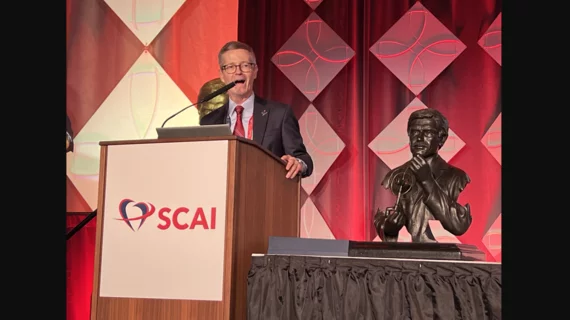SCAI president begins term on optimistic note: ‘Our field’s future is brighter than ever’
Interventional cardiologist James B. Hermiller, MD, is officially the new president of the Society for Cardiovascular Angiography & Interventions (SCAI). He assumed the position at the closing ceremony of SCAI 2024 Scientific Sessions, the organization’s annual meeting in Long Beach, California.
Hermiller is a veteran cardiologist who currently serves as director of the interventional cardiology fellowship and structural heart program at St. Vincent Ascension Heart Center in Indianapolis. He is known throughout the structural heart space as a researcher, author, principal investigator and much more. He was also a member of multiple SCAI committees, including the SCAI Board of Trustees.
“I'm thrilled to begin my tenure as the next SCAI president,” he said. “This is certainly the pinnacle of my career, and I'm excited and so grateful for the opportunity to serve our members this year. I begin my presidency at a transformational time for SCAI, for interventional cardiology, and for the cardiology field as a whole. We will ensure SCAI’s continued leadership as your partner in interventional cardiology. Our field's future is brighter than ever. I am excited to lead the charge at this point in our history.”
Hermiller will be SCAI’s president for a single term that lasts through SCAI 2025 Scientific Sessions in Washington, D.C.
Other incoming SCAI officers for the 2024-2025 year include:
- SCAI President-Elect Srihari S. Naidu, MD
- Vice President J. Dawn Abbott, MD
- Secretary Joaquin E. Cigarroa, MD
- Treasurer Arnold H. Seto, MD, MPA
- Immediate Past President George D. Dangas, MD, PhD
The SCAI Board of Trustees also gained a few new members for 2024-2025:
Additional information about SCAI 2024 Scientific Sessions is available on the SCAI website. Prior Cardiovascular Business coverage of the conference is available here, here, here and here.

